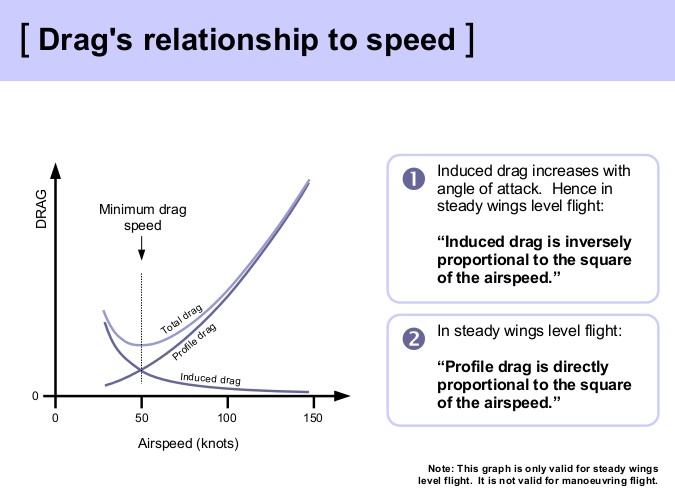Re: [Fledgling] Cliff Strike #2 Moab Turkey Boogie
Fledgling wrote:
Colm wrote:
I think it hinges on that some people are using "stall" equivalently to "depressurizing." Whereas I am not, according to the strict definition of an airfoil stall.
Then I don't think your exact definition of a stall works as well with parachutes as it does with solid wings. Sure an airfoil is either flying or stalled, or working and not working. But with a parachute we do have that middle ground where our inflated wing stops being an airfoil and becomes a parachute (ie. something that slows our descent) before it finally stalls (depressurizes). While not your strict definition maybe its more suitable.
I think there are good reasons to stick with the standard aerodynamic definition:
1. every other sub-discipline of aviation uses it
2. all the relevant scientific work revolves around that definition-- if we start re-defining stall, we have to completely re-invent the wheel if we want to mathematically analyze a parachute. That is a lot of work!
3. what is aerodynamically called a "stall" reflects a distinct physical phenomenon that happens to parachutes, independent of them collapsing, and now we have to come up with a new name for that process.
4. that "middle ground" which you describe is already addressed by current aerodynamic theories of drag
5. stall does not mean a wing suddenly falls out of the sky as some assume (although that CAN happen.. i.e. Air France 447). It doesn't even mean you will get any tactile indication whatsoever of a stall. Stall means your wing is producing less lift (instead of more) as you steepen its AOA. In an airplane with tail section, this is bad for reasons I don't need to get into here. In a parachute, we can tolerate it because parachutes act as drag devices, not just lift devices.
6. It confuses what we are really trying to avoid in BASE life: depressurization!
On the other hand, the vast majority of parachute pilots out there colloquially use "stall" exactly the way you use it. So you have already won that battle :) And it's fine for people to do that day-to-day. But when we start getting into technical discussions of brake settings, limits of the flight envelope, stall speeds etc, we can use established aerodynamic theory to predict outcomes. But to take advantage of all the hard work that aero engineers have done for us in the past, I think it behooves us to at least know what the standard definitions are and what physics each definition represents. Just my opinion though!
Fledgling wrote:
Colm wrote:
If you do not weigh enough, you do not have enough "thrust" to overcome your drag, and the canopy never gets to step 2. It collapses because it can't stay pressurized, not because the airfoil is in an aerodynamic stall.....
It's not that being lightweight is directly causing a stall. You were already stalled. But being lightweight prevents you from flying out of the stall....
While I am finally starting to understand your theory I still find myself wanting to argue with it :-) I would say that the lighter loading has less need to begin it's drive and when it does it would actually need to drive less. Not to mention it's lighter loading would give it superior slow flight capabilities as well as a greater safety margin for the onset of a stall (depressuriztion). Maybe this is why I would consider a lighter loaded canopy to be more stable in deep brakes.
I am also starting to think your overcoming drag theory may be flawed in that drag is a product of airspeed. The higher the airspeed the higher the drag. Right? So wouldn't that mean that the lighter loading that requires less airspeed to fly would also create less drag and therefore have less drag to overcome? Wouldn't this render the lighter loading not enough thrust argument void? No clue here, just discussion.
Check out this graph of speed vs. total drag
found here on page 34. Here is a screenshot, but note that the speeds on the x-axis are arbitrary and generalized for gliders. Our speeds would be much slower:

Note, there is a realm at low speed where drag actually decreases as you go faster. And it's not that "lighter wingloading requires less airspeed to fly," its more correct to say "lighter wingloading will seek a slower equilibrium speed, all else being equal." If that equilibrium speed happens to be lower than the speed you need to stay pressurized, you have a problem.
Regarding your final 2-3 sentences, you are absolutely correct in identifying that a dynamic equilibrium exists between drag and airspeed. But note how it is not linear. Ultimately drag and airspeed become balanced, they have to neutralize out somewhere in the middle. Lighter gliders neutralize out at a lower airspeed than heavier ones, at the same angle of attack. Not because they "need to" to keep flying, but because that's where the physical equilibrium happens to be found.
Aerodynamics is all about "the sweet spot"... travel too far in one direction or the other, with regards to weight, center of gravity, line trim, etc etc etc... and you often paradoxically find that the explanation for one phenomenon is now oppositely true! Eager to hear your thoughts on these proposed theories.



























